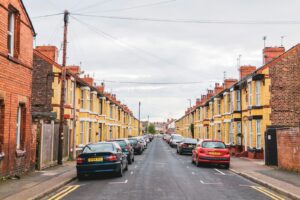Sandwell: A new hospital at the heart of local economic change
The new Midlands Metropolitan Hospital will be embedded within its local economy in a similar way to that of Cadbury’s in Bourneville, offering a test case for the new role of anchor institutions in regeneration.
Before a brick has been laid on the site of the new Midlands Metropolitan Hospital, plans are being drawn up to ensure its broader impact on the local economy.
Situated in the heart of two of the poorest neighbourhoods in the west Midlands, Ladywood and Smethwick, the Sandwell and West Birmingham Hospital Trust wants the new building to have an impact that extends far beyond traditional health outputs when it opens its doors in five years.
Conrad Parke, a regeneration specialist, is supporting the trust and other partners to look at how the institution can affect broader health determinants, from income to education and from housing to food.
‘People generally think of a hospital as a castle in a moat of car parks’, he says. ‘But why can’t it be integrated into its local community not only physically but economically and culturally?’
Parke wants the new Midlands Metropolitan hospital to play a similar role in its local neighbourhoods to that of Bournville, a model village built by the Cadbury brothers on the south side of Birmingham. But what does it mean for an institution in the 21st century to invest in the long-term future of the place in which it is based?
Building a local supply chain
A major part of the vision is ensuring that the hospital sources as many of its employees and suppliers as locally as possible. A local multiplier analysis conducted by the Centre for Local Economic Strategies (CLES) showed that the total spend of the three hospitals in the local area was £150m and that for contracts worth over £100k, only around 15% was going back into the local Birmingham and Sandwell economies. 
Parke believes that this figure can realistically be doubled with more focused interventions. Indeed, the trust has already started work on the next level of analysis to identify specific sectors were local procurement opportunities may exist.
Inspired by the Evergreen model in Cleveland, Ohio, where a local hospital now draws on its local neighbourhood for services from laundry to energy, Parke, in partnership with Sandwell Council, is investigating setting up local social enterprise cleaning companies and food suppliers that will service the hospital once it has opened.
Sandwell Council has created a virtual version of the hospital to help map the products and services going into the hospital and match those with local companies, and Localise West Midlands is conducting research to identify best practice in hospital developments and their operations across England.
Its research – which will be published shortly – has identified a number of ways in which NHS hospitals are contributing to their local economies and social value, from training and employment of disadvantaged groups to better links with locally-owned businesses, developing local supply chains and facilitating close live-work patterns. The procurement of local food is also becoming common, driven by both its carbon reduction potential as well as localisation, health and wellbeing.
 The role of anchor institutions in regeneration
The role of anchor institutions in regeneration
As public investment dwindles, so-called ‘anchor’ institutions are playing ever larger roles in the wellbeing of their local economies. While private organisations can walk away when market forces dictate, anchor institutions such as hospitals, colleges, councils and housing organisations are wedded to the places in which they are based. Ensuring that such institutions play a role in the fortunes of their neighbourhoods is becoming a key regeneration strategy.
Preston is leading the way in the UK, with the local council running a Community Wealth Building programme aimed at using procurement practice and behaviour to prevent money from leaking from the local economy.
Working with CLES it has developed a baseline understanding of the procurement spend of its anchor institutions – including the local college, council and housing association. Its initial findings showed that £458m is being leaked out of the Lancashire area. Preston and Lancashire have since increased their level of local procurement spend and identified around £3m that is ‘influenceable’.
The model village at Bournville, which Parke wants to mimic with the Midlands Metropolitan hospital, was set up by the Cadbury brothers in 1893 to provide housing and local facilities to staff at its local factory and other local residents. With a mix of private and rented housing and a trust that re-invests all profits back into the community, it proves that stable investment into an area from a corporate sponsor can reap dividends. Bournville is today one of the most desirable places to live in the country.
The embedding of the hospital within its local economy – and the collaboration it
demonstrates between local actors – offers a test case for the future anchoring of places.
Cadbury’s paternalistic approach encouraged residents to attend local adult education classes and forbade pubs. This philanthropic model was combined with and then replaced by municipalism, demonstrated most clearly by Chamberlain’s Birmingham.
But today’s new local anchor institutions are part of a more democratic vision of a local economy, in which a plurality of actors and engaged citizens play roles in the development of local areas.
A recent report on the role of anchor institutions in local economic development, describes the progressive role of a range of local anchors that can ‘lock in or stimulate local economic benefit and the good local economy’.
‘It is about local government being the active enabler, encouraging and inspiring self-determination from a range of sectors and innovative collaboration and crossover between social, public and commercial networks’.
The embedding of the Midlands Metropolitan hospital within its local economy – and the collaboration it demonstrates between local actors – offers a test case for the future anchoring of places.
















